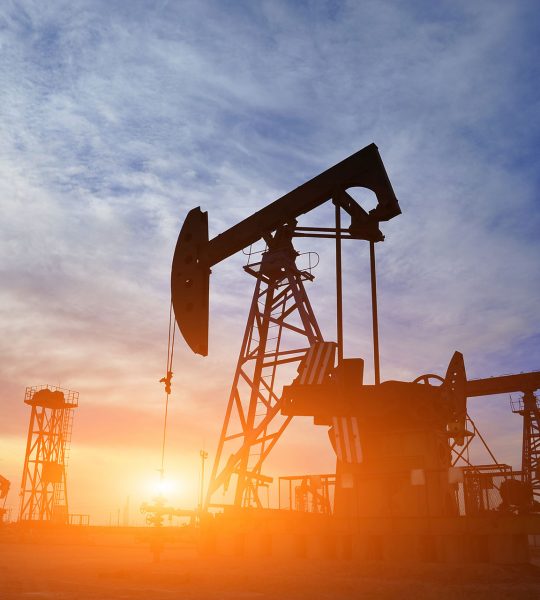Our services
Petroleum services
Sky Oil and Gas Services has extensive experience in providing petroleum services and registering and qualifying foreign companies to work in the Egyptian market. Sky Gas also offers, through its strong network, the marketing of crude oil and petroleum derivatives, whether in the Egyptian market or foreign markets.
Natural gas stations
There are two types of CNG infrastructure: time fill and fast fill. The main structural differences between the two systems are the amount of storage capacity available and the size of the compressor. These factors determine the amount of fuel dispensed and the time it takes to deliver CNG. Most CNG stations include one of these two types of systems, but "combined fill" stations include both types.
Various types of reciprocating compressor units with a wide range of pressures and performance capacities are applied in CNG filling stations.
The compressor unit consists of the following equipment:
Direct drive or belt driven scroll compressor with air or water cooled cylinders;
Gas air cooler unit
Safety valves between stages
Wet and oily separators between stages
Compressor relief system
Oil system and gas lines
Transformers, automatic control equipment and electrical equipment.
technical parameters




Natural gas stations
There are two types of CNG infrastructure: time fill and fast fill. The main structural differences between the two systems are the amount of storage capacity available and the size of the compressor. These factors determine the amount of fuel dispensed and the time it takes to deliver CNG. Most CNG stations include one of these two types of systems, but "combined fill" stations include both types.
Various types of reciprocating compressor units with a wide range of pressures and performance capacities are applied in CNG filling stations.
The compressor unit consists of the following equipment:
Direct drive or belt driven scroll compressor with air or water cooled cylinders;
Gas air cooler unit
Safety valves between stages
Wet and oily separators between stages
Compressor relief system
Oil system and gas lines
Transformers, automatic control equipment and electrical equipment.
technical parameters
Mining and mine management
Egypt is a land rich in minerals such as white sand, manganese, phosphates and others
Therefore, Sky Gas works on:
Organizing searches and exploitation of raw materials for mines and salines.
Technical supervision of extraction operations in order to achieve optimum utilization and preservation.
Maximizing the added value of the various mineral resources.
Activate cooperation with scientific and research bodies to exchange expertise and develop performance in the field of mining.
Implementation of manufacturing activities in its various stages for mineral ores.
Meeting the needs of the local market for mineral raw materials.
Supporting the national economy by implementing national and strategic projects to create foreign investment opportunities
Mining and mine management
Egypt is a land rich in minerals such as white sand, manganese, phosphates and others
Therefore, Sky Gas works on:
Organizing searches and exploitation of raw materials for mines and salines.
Technical supervision of extraction operations in order to achieve optimum utilization and preservation.
Maximizing the added value of the various mineral resources.
Activate cooperation with scientific and research bodies to exchange expertise and develop performance in the field of mining.
Implementation of manufacturing activities in its various stages for mineral ores.
Meeting the needs of the local market for mineral raw materials.
Supporting the national economy by implementing national and strategic projects to create foreign investment opportunities

Logistics business
Sky Gas works in the logistics business because of its expertise and strong partnerships with foreign companies, as it provides it with a strong marine fleet of our partners to transport, load and unload goods. It also has a distinguished team of engineers and technicians supervising the logistics business to ensure the implementation of the business with high efficiency.
Public supplies
Through the network and various relationships of Sky Gas, can work on supplying all the companies’ shortcomings and completing their needs of public supplies such as (equipment – production requirements – spare parts for equipment and production lines – foodstuffs and so on …..)
International commercial agencies
In Sky Gas, we have many resistances that give us the opportunity to represent any of the international brands in Egypt, as we have partnerships and a network of communication with many parties that facilitate all procedures for that.
International commercial agencies
In Sky Gas, we have many resistances that give us the opportunity to represent any of the international brands in Egypt, as we have partnerships and a network of communication with many parties that facilitate all procedures for that.
Petrochemical business
Sky Gas can supply all kinds of petrochemicals of high quality, as we have a network with the largest factories in the Middle East to manufacture petrochemicals, and Sky Gas can supply petrochemicals that are used in:

